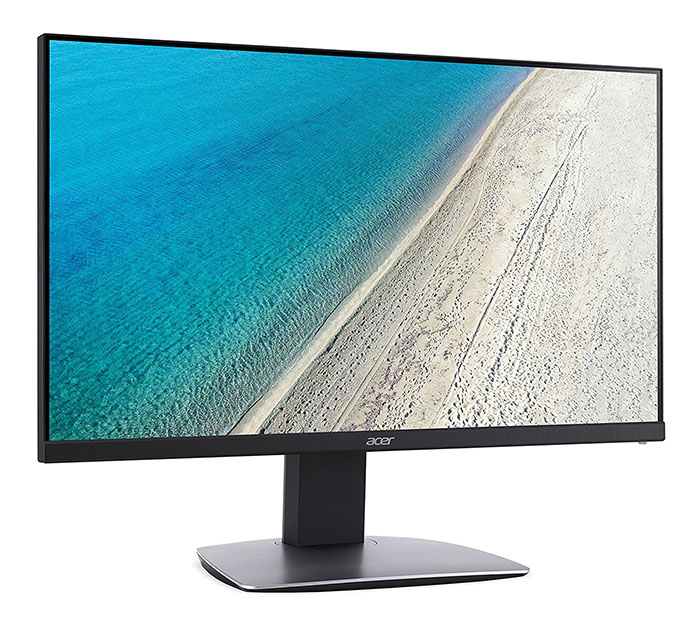Early Verdict
Among professional monitors with wide gamuts, the Acer BM320 carries a reasonable price tag. It’s still firmly in the premium category, but many competitors cost significantly more. It offers easy setup thanks to accurate factory-calibrated color modes and independently-adjustable output levels. You won’t gain anything from calibration, but for most users that shouldn’t be a problem. Build quality is top-notch and Ultra HD resolution means you won’t feel the need to upgrade your display for a while. If you need the Adobe RGB gamut, the BM320 is worth considering.
Pros
- +
Accurate factory color modes
- +
Solid build quality
- +
Ultra HD resolution
Cons
- -
No gains from manual calibration
- -
Contrast
Why you can trust Tom's Hardware
Features & Specifications
With all the hoopla surround gaming monitors and their adaptive-sync, fast refresh, super speedy panels, it’s easy to forget that we sometimes need a solid tool with accurate color and features more befitting a professional workstation. One of the criteria we look for in such products is an Adobe RGB gamut. Photographers and graphic artists need the extra volume provided by that large color space. With Rec.2020 still in the prototype stage, video editors need something that can cover DCI-P3 when they’re working on Ultra HD Blu-ray releases.
We haven’t seen a new wide-gamut display in a while, but Acer just sent us its BM320 for evaluation. It’s a 32” IPS screen with Ultra HD resolution, 10-bit native color depth, an Adobe RGB gamut, factory calibration, and a heavily-built chassis that should keep it in operation for the long haul. Let’s take a look.
Specifications
The BM320 checks all the boxes for a professional workspace. The 32” IPS panel sports Ultra HD (3840x2160) resolution for a pixel density of 137ppi. The backlight is flicker-free and has a low blue-light feature to tone down the color temp for a fatigue-free workday. The color depth is 10-bits native, which is supported by both DisplayPorts and the single HDMI 2.0 input. You also get DVI for compatibility with nearly any video card.
Calibration is taken care of in advance and certified with an enclosed data sheet. You also get uniformity compensation and three color modes corresponding to Adobe RGB, sRGB, and Rec.709. The only thing missing is a DCI-P3 preset. The chassis offers modern styling with a relatively slim profile and thin 10mm bezels around the top and sides. It’s not quite frameless, but it’s about as narrow as any similar monitor can boast.
If you’re in the market for a large proofing monitor and don’t want to deal with calibration, the BM320 might be a good choice. Let’s dive into the tests and see how it stacks up.
Packaging, Physical Layout & Accessories
The carton is well-armored against shipping abuse and protects the contents with rigid foam blocks. The base is the only thing you must assemble when unpacking. The box also includes HDMI, DisplayPort, and USB cables, along with an IEC cord for the internal power supply. If you need an analog audio connection, that cable is included too.
Product 360
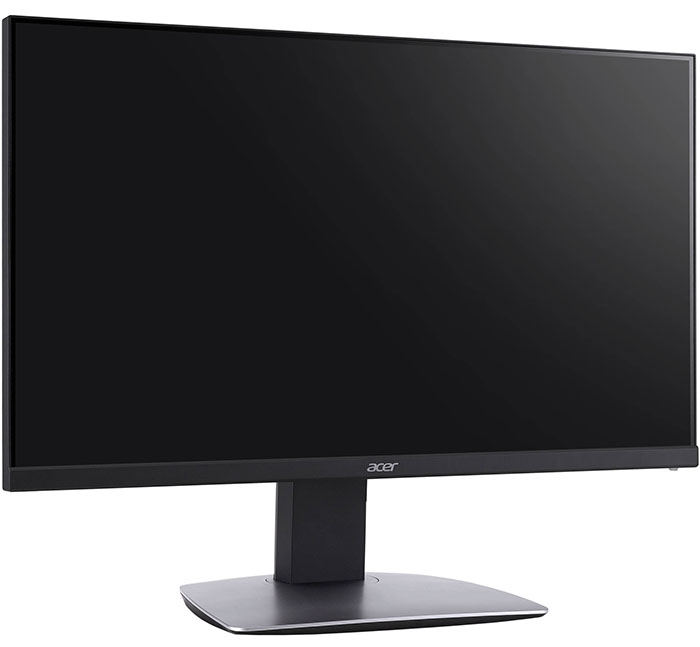
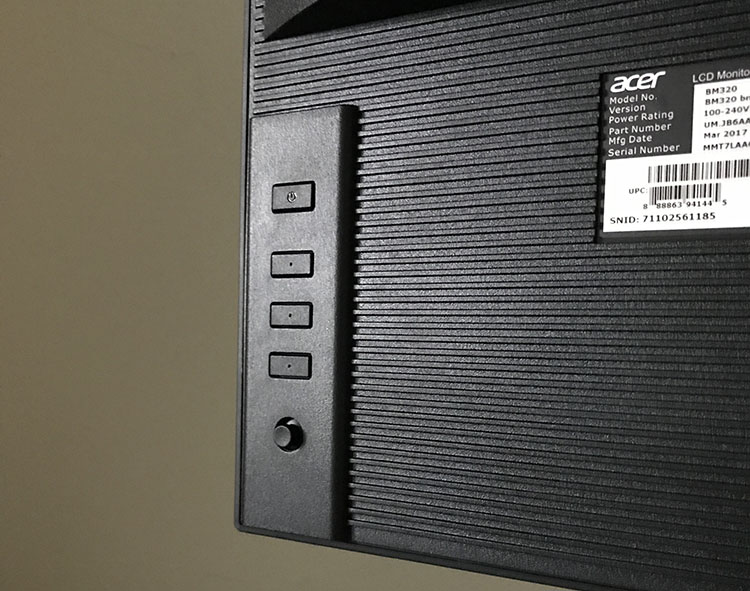
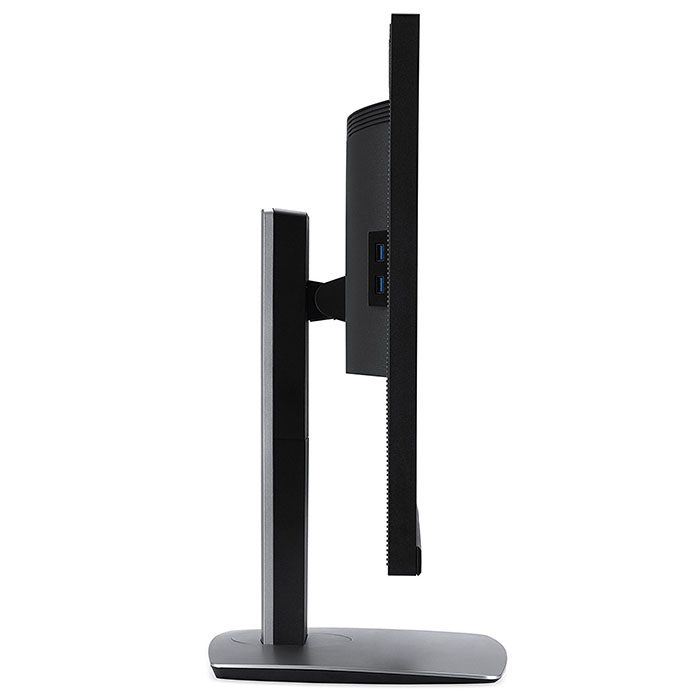
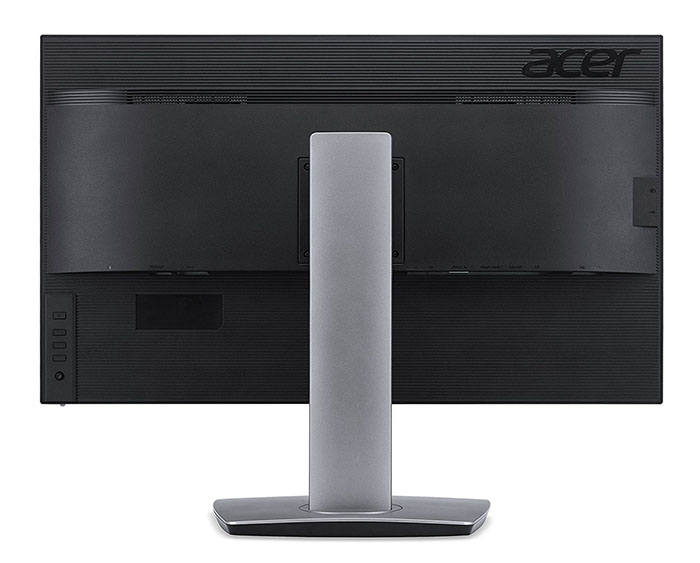

For a 32” monitor, the BM320 is relatively compact with a slim panel, just-right-sized base, and a heavy, telescoping upright. There is plenty of heft, though. At nearly 25 pounds, Acer has provided a solidly-built display with a rugged chassis to match. The bezel is just 10mm around the top and sides and 24mm at the bottom. The image shows a thin frame, so it’s not truly borderless. The anti-glare layer (3H hardness) fits flush for a completely unblemished look when the screen is off. Clarity is top-shelf with no signs of grain or artifacts. With a high 137ppi density, the image is always sharp and clear.
Get Tom's Hardware's best news and in-depth reviews, straight to your inbox.
Controls are around back at the lower right and consist of four buttons and a joystick. OSD navigation can be accomplished with said stick, while two of the keys are programmable. The top one toggles power. The LED is blue and stands out from the bottom in a neat geometric shape. It’s a small detail but one we haven’t seen before.
The side profile is a tad thinner than most monitors this size and includes two of the four USB ports. The monolithic stand supports a full array of adjustments, including nearly six inches of height, 5° forward/25° backward tilt, 45° swivel in each direction, and a portrait mode. Movement is both firm and smooth with no play whatsoever. This is one beefy monitor.
Around back is a component bulge that offers plenty of ventilation and two small speakers that fire back at the wall. Power consumption is spec’d at 50W average, but our Kill-A-Watt measured just 40W when the backlight was set to 200nits. That keeps the BM320 running cool all day.
The input panel faces downwards and includes one HDMI 2.0, two v1.2 DisplayPorts (one mini), and a DVI input. The remaining USB ports are here too (v3.0) along with analog audio jacks, one in and one out.
MORE: Best Gaming Monitors
MORE: Best Professional Monitors
MORE: How We Test Monitors
MORE: How To Choose A Monitor
MORE: All Monitor Content

Christian Eberle is a Contributing Editor for Tom's Hardware US. He's a veteran reviewer of A/V equipment, specializing in monitors. Christian began his obsession with tech when he built his first PC in 1991, a 286 running DOS 3.0 at a blazing 12MHz. In 2006, he undertook training from the Imaging Science Foundation in video calibration and testing and thus started a passion for precise imaging that persists to this day. He is also a professional musician with a degree from the New England Conservatory as a classical bassoonist which he used to good effect as a performer with the West Point Army Band from 1987 to 2013. He enjoys watching movies and listening to high-end audio in his custom-built home theater and can be seen riding trails near his home on a race-ready ICE VTX recumbent trike. Christian enjoys the endless summer in Florida where he lives with his wife and Chihuahua and plays with orchestras around the state.
-
kenop Sorry to be an idiot, but I can't figure this out. I use X-Rite's i1 Display Pro, but it requires what I think of as manually calibrating the monitor. So for me, the statements "No gains from manual calibration" and "most users will employ software solutions like CalMAN or X-Rite to get their color spot-on" are contradictory. Can I or can I not use i1 Display Pro to calibrate the BM320? Thank you for another great review!Reply -
kenop And an observation on Acer's warranty: It allows up to THIRTY ONE defective pixels on this monitor (though only one defective pixel is allowed in the central 1/9th portion). Seems like a lot to me, but admittedly I haven't been comparing warranties yet.Reply -
AnimeMania Reply20128953 said:And an observation on Acer's warranty: It allows up to THIRTY ONE defective pixels on this monitor (though only one defective pixel is allowed in the central 1/9th portion). Seems like a lot to me, but admittedly I haven't been comparing warranties yet.
You have to remember there are 8,294,400 pixels on the screen. It is probably hard to produce a 4K monitor with no dead pixels at an affordable price. -
zodiacfml Pretty nice, considering all the specs but could be better with a more sophisticated backlight, thus, improve contrast ratio too.Reply -
ceberle Reply20128914 said:Sorry to be an idiot, but I can't figure this out. I use X-Rite's i1 Display Pro, but it requires what I think of as manually calibrating the monitor. So for me, the statements "No gains from manual calibration" and "most users will employ software solutions like CalMAN or X-Rite to get their color spot-on" are contradictory. Can I or can I not use i1 Display Pro to calibrate the BM320? Thank you for another great review!
You can use an i1 Display Pro to create a lookup table with CalMAN or X-Rite software. Manual calibration refers to adjustments made in the OSD which aren't effective with this monitor.
-Christian- -
kenop Reply
Thank you, Christian, for the clarification. I came to the i1 Display Pro from an earlier model, and I guess I didn't RTFM since I had no idea it could do that. That's exactly what I needed to know. Thanks again!20129650 said:You can use an i1 Display Pro to create a lookup table with CalMAN or X-Rite software. Manual calibration refers to adjustments made in the OSD which aren't effective with this monitor.
-Christian-
-
derekullo Reply20129327 said:OMG i HATE the autoplay video's, why are you wasting bandwidth on this ?
You can use a hosts file from:
http://winhelp2002.mvps.org/hosts.htm
to get rid of ads on most sites.
You can also use a free ad blocking dns, Adguard
https://adguard.com/en/adguard-dns/overview.html
176.103.130.130
176.103.130.131
Personally I use Noscript + AdBlock + Hosts file, which allows me to see 0 ads on Tom's.
No videos, no audio playing, no ads boxing the content with super small X's.
I call this the Destiny 2 approach to ads
https://www.bungie.net/en/Help/Article/46101
I still use google's dns since its faster than all the others.
But for the class I teach on online security the Adguard dns works nearly as well for those unwilling or unable to install a hosts file and or manually configure Noscript.
Does Toms still box you in with ads on all sides?
Is it the same Logitech rgb keyboard video that used to follow you around earlier this year?
-
Novell SysOp fire phasers 5 time Lies. Acer nor Asus have 10-bit panels. All of their monitors are 8+FRC. They are GAME monitor companies, they are not going to give you a pro monitor. Do not trust either company, they are scamming you and you can read it in their forums. False marketing and lying. They can't even be bothered to list the specs on their scam HDR monitors that have been delayed until next year. They refuse to list Adobe, DCI-P3, and rec2020 coverage. And if you cannot get 100% sRGB, you're pathetic.Reply
And the most glaring omission is they fail to tell you you need a Quadro to edit 10-bit. And STFU with contradicting me. I'm in the industry and know more than all of you, and NVIDIA even tell you themselves on their own site. -
slicedtoad Reply20129873 said:Lies. Acer nor Asus have 10-bit panels. All of their monitors are 8+FRC. They are GAME monitor companies, they are not going to give you a pro monitor. Do not trust either company, they are scamming you and you can read it in their forums. False marketing and lying. They can't even be bothered to list the specs on their scam HDR monitors that have been delayed until next year. They refuse to list Adobe, DCI-P3, and rec2020 coverage. And if you cannot get 100% sRGB, you're pathetic.
And the most glaring omission is they fail to tell you you need a Quadro to edit 10-bit. And STFU with contradicting me. I'm in the industry and know more than all of you, and NVIDIA even tell you themselves on their own site.
I'm not an expert by any means when it comes to workstation displays, so these are just questions:
If a 8+FRC panel performs the same as a true 10-bit panel (as in, they achieve the same color accuracy, color depth, etc) is it worse? Or are you listing that as the reason why the color accuracy on this monitor doesn't achieve perfect sRGB?
As for needing Quadro, I thought all 10-bit displays needed workstation GPUs to do 10-bit? And wouldn't that be Nvidia's fault for disabling that on their consumer cards?
